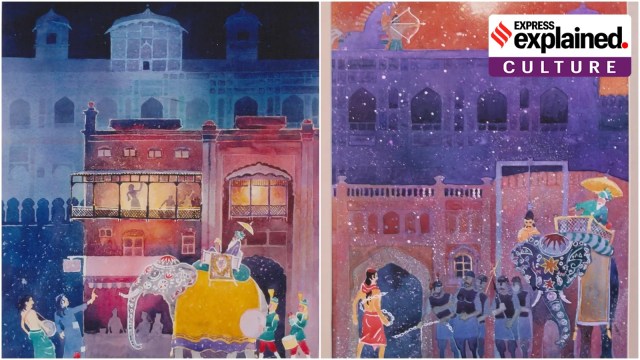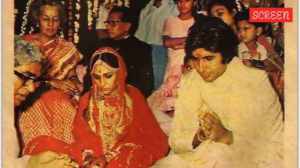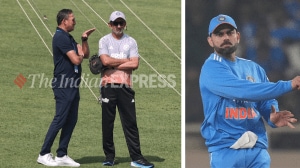A popular folksong recounts how Rai Abdullah Khan Bhatti, better known as Dulla Bhatti – a bandit notorious for looting Mughal caravans and distributing the spoils among the poor – prevented two Brahmin girls, Sundri and Mundri, from being forcibly taken into Mughal Emperor Akbar’s harem. Later, he got them married with great pomp. The song goes:

Sunder mundriye ho!
Tera kaun vichara ho!
Dulla Bhatti wala ho!
(Sundari &Mundari/ Who will think about you/ Dulla of the Bhatti clan will/ Dulla got his daughters married)
Dulla Bhatti thus became a symbol of syncretic Punjabi tradition, celebrated by the Hindus, Muslims and Sikhs. To date, the legend unites Punjabis on both sides of the border during Lohri, which is celebrated on the last night of the coldest month ‘Poh’ in the lunisolar Bikrami calendar.
Who were the Bhatti chiefs?
Though the story of Dulla Bhatti largely comes from folk legends, they are set in the prevailing historical context of Punjab. He is said to have hailed from Pindi Bhattian, located on the strategic route connecting Lahore and Kabul, and belonged to the Bhatti Rajput clan. His grandfather Sandal Bhatti and his father Farid Bhatti are also believed to have been involved in a protracted battle against the Mughals.
Historically, chieftains of the Bhatti clan opposed Emperor Akbar’s tax reforms, which demanded zamindars pay a fixed amount based on an estimation of their yearly crop value calculated from previous years. Akbar also centralised revenue collection from peasants under Mughal-appointed faujdars, directly challenging the zamindars’ authority.
Story continues below this ad
Professor of History Ishwar Dayal Gaur, in his book Martyr as Bridegroom, says the reforms not only aimed to centralise power but also to neutralise agrarian chieftains such as the Bhattis, who were seen as obstacles to imperial dominance.
Dulla Bhatti’s father and grandfather are said to have resisted Mughal encroachment and were captured and publicly executed. As per the legend, their heads were displayed at the gates of Lahore as a warning for anyone audacious enough to challenge the Mughal rule.
How Dulla Bhatti became a folk hero
Born shortly after his father’s execution, Dulla Bhatti was raised by his mother Ladhi, who did not tell her son about their family history, fearing that he might want to avenge their deaths and meet the same end.
According to folklore, Dulla decided to take up cudgels against the Mughals after a villager taunted him for breaking her earthen pot with his catapult, and challenged him to avenge the deaths of his father and grandfather instead. Dulla then confronted his mother and asked her to unearth his father’s weapons, which he used to launch a guerrilla rebellion against the Mughals.
Story continues below this ad
Much like a son-of-the-soil Punjabi Robin Hood, he successfully disrupted Mughal supply chains, ambushed imperial caravans, and redistributed the loot among the oppressed.
Akbar eventually withdrew the revenue collection system. “Akbar’s visit to Guru Arjan Dev at Goindwal and the royal exemption of land revenue of the area of Bari Doab may also be read in the context of Dulla’s insurgency. The emperor must have thought that exemption of land revenue would be an expedient strategy to pacify the peasants of the Bari Doab and win over the confidence of the guru who had his strong social base among the peasantry. The emperor was politically wise not to simultaneously open two fronts of confrontation, one represented by Dulla and the other by the guru,” writes Ishwar Dayal Gaur in his book.
Dulla Bhatti was executed by hanging in Lahore in 1599. Akbar aimed to use the public execution as a warning, but Bhatti is said to have remained defiant until the very end.









































